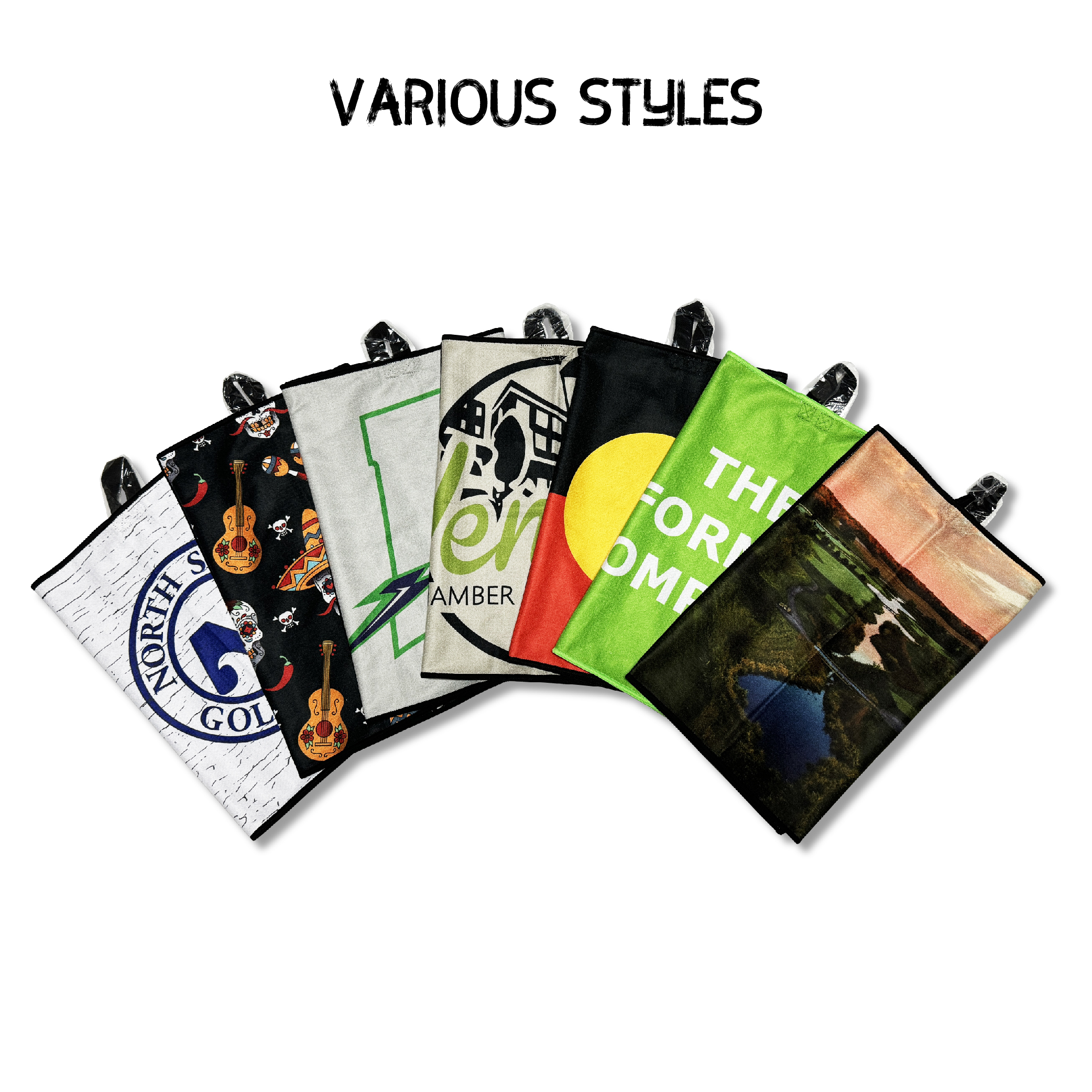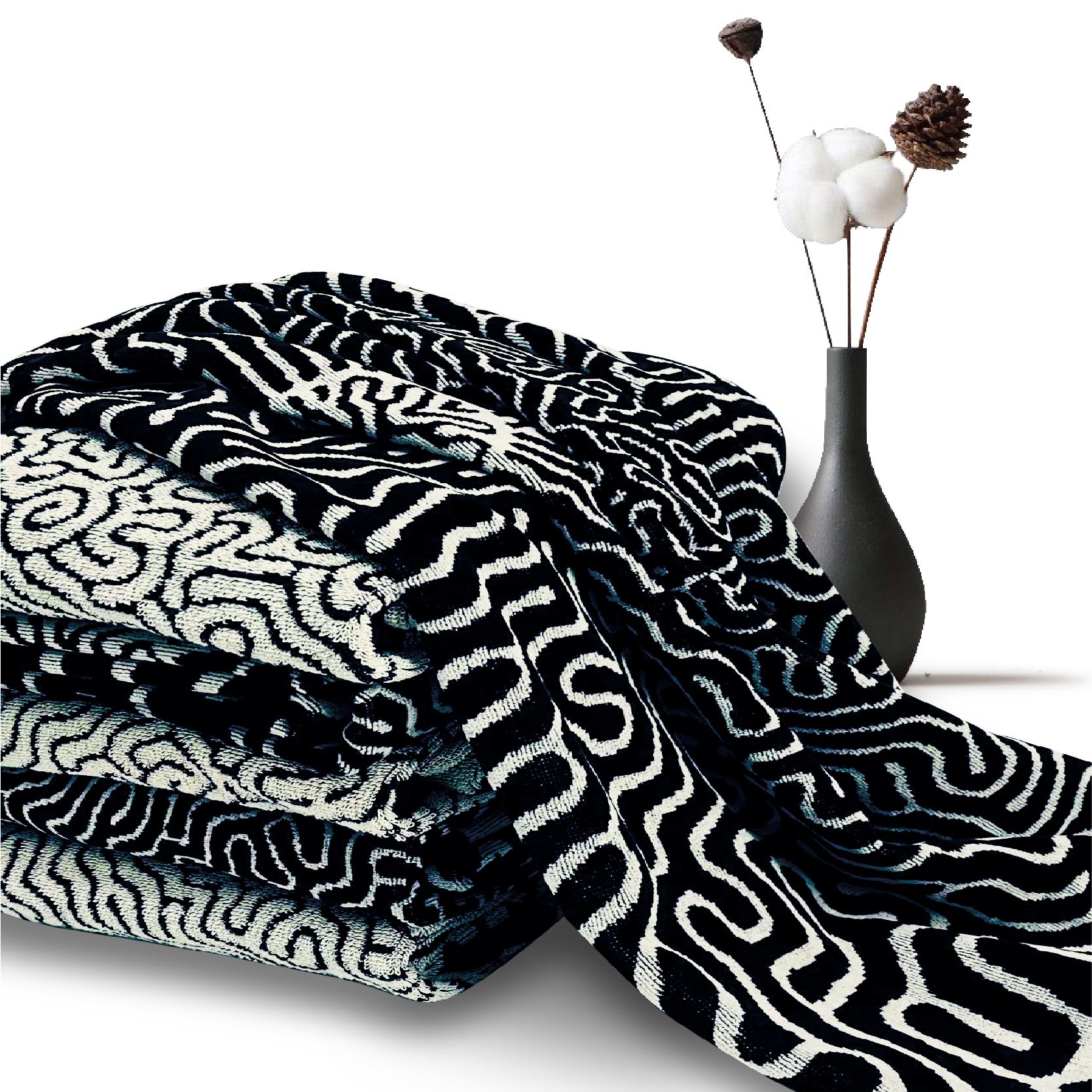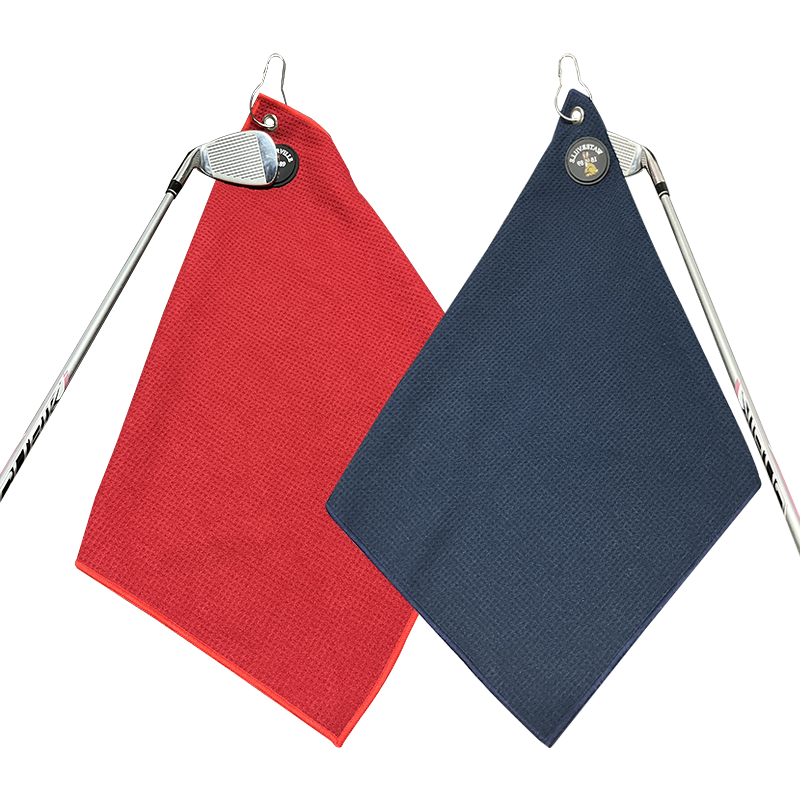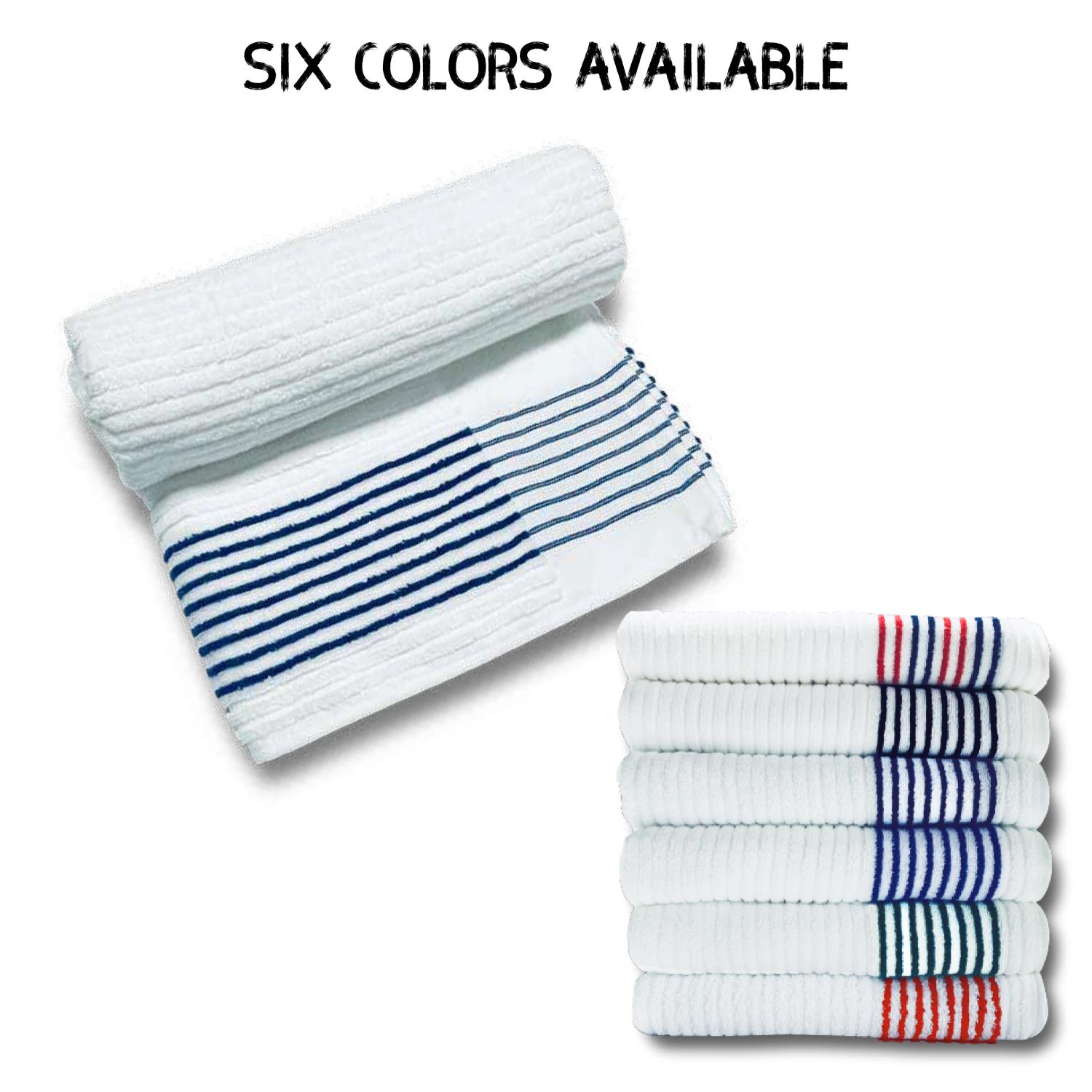Towel - Jinhong Promotion
Established in 2006, Lin’An Jinhong Promotion & Arts Co., Ltd has grown into a trusted leader in the towel manufacturing industry, driven by the belief that "Nothing Is Impossible For a Willing Heart." Located in the scenic city of Hangzhou, China, Jinhong Promotion has consistently delivered quality and innovation to customers worldwide. Specializing in the production of sports, bath, and beach towels, as well as premium golf accessories, the company is renowned for its ability to produce custom woven towels with a minimum order quantity of just 80 pieces—a unique capability in China, enabled by our U.S.-trained technicians.
Our product lineup includes the luxurious Microfiber Oversized Lightweight Beach Towel, perfect for those seeking unparalleled quality and absorbency. Additionally, our Jacquard Woven Towels, crafted from 100% cotton, exemplify our commitment to durability and design. For golf enthusiasts, the Magnetic Golf Towel offers innovative functionality, featuring a versatile silicone logo patch with an embedded magnet that seamlessly attaches to your clubs or golf cart.
Jinhong Promotion’s dedication to eco-friendly materials and adherence to European dye standards ensures that our products meet rigorous international testing requirements. Our reputation for reliability and excellence has made us a preferred exporter in Europe, North America, Austria, and Asia, transforming business connections into enduring friendships.
Our product lineup includes the luxurious Microfiber Oversized Lightweight Beach Towel, perfect for those seeking unparalleled quality and absorbency. Additionally, our Jacquard Woven Towels, crafted from 100% cotton, exemplify our commitment to durability and design. For golf enthusiasts, the Magnetic Golf Towel offers innovative functionality, featuring a versatile silicone logo patch with an embedded magnet that seamlessly attaches to your clubs or golf cart.
Jinhong Promotion’s dedication to eco-friendly materials and adherence to European dye standards ensures that our products meet rigorous international testing requirements. Our reputation for reliability and excellence has made us a preferred exporter in Europe, North America, Austria, and Asia, transforming business connections into enduring friendships.
Towel
Towel FAQ
How often should I replace towels?▾
Replacing towels may seem like a simple task, yet it is one that requires careful consideration to maintain hygiene and comfort in your home. Towels, whether they are for bathroom use, kitchen purposes, or for those relaxing days at the beach, have different lifespans and signs that indicate when they should be replaced.
The lifespan of a towel largely depends on its usage and quality. For most bathroom towels, a replacement every two to five years is considered optimal. The frequent exposure to moisture and constant use leads these towels to deteriorate over time. Kitchen towels, due to their rigorous use and exposure to various stains and residues, should ideally be replaced every one to two years. Similarly, beach towels, often exposed to sun, sand, and saltwater, require keen attention. Although their use may be seasonal, their exposure to harsh elements and irregular washing cycles calls for a replacement every couple of years, depending on visible wear and tear.
Certain signs unmistakably tell us when a towel is past its prime. A lack of softness is a primary indicator; over time, towels may lose their plush feel, often due to excessive detergent use or improper washing. Odors that persist even after a thorough wash mean the towel is retaining bacteria, indicating it is time to let it go. Moreover, towels that no longer absorb effectively or have begun to show signs of fraying and ripping at the edges are clear signals that replacement is due. With beach towels, in particular, diminished vibrancy and the inability to effectively wick away moisture are signs they may need to be replaced.
Proper care can extend the life of your towels significantly. Washing bathroom towels every three to four days is generally advisable, while kitchen towels should be washed more frequently due to their exposure to food particles and frequent handling. Beach towels should be rinsed thoroughly after each use to remove salt and sand residue. Always ensure towels are hung to dry properly after use to prevent musty odors and mildew growth.
When it comes time to purchase new towels, several factors should guide your selection. The weight of a towel, often measured in grams per square meter (GSM), affects both its absorbency and drying time. Towels with a higher GSM are typically thicker and more absorbent, suitable for luxurious bathroom use and beach towels. However, a lighter GSM may be more appropriate for kitchen towels or for those who prefer quick-drying options. The fiber composition is also crucial; 100% cotton towels are often preferred for their absorbency and softness, while cotton/polyester blends can offer durability and quicker drying times.
Replacing towels may not always be top of mind, but it plays a crucial role in maintaining a clean and comfortable home environment. By recognizing the signs of wear and following best care practices, you can optimize the lifespan of your towels. Whether it's a plush bath towel or a vibrant beach towel, staying on top of these household essentials ensures you always have fresh, effective towels on hand for every need.
● Understanding Towel Lifespan
The lifespan of a towel largely depends on its usage and quality. For most bathroom towels, a replacement every two to five years is considered optimal. The frequent exposure to moisture and constant use leads these towels to deteriorate over time. Kitchen towels, due to their rigorous use and exposure to various stains and residues, should ideally be replaced every one to two years. Similarly, beach towels, often exposed to sun, sand, and saltwater, require keen attention. Although their use may be seasonal, their exposure to harsh elements and irregular washing cycles calls for a replacement every couple of years, depending on visible wear and tear.
● Recognizing Signs of Wear
Certain signs unmistakably tell us when a towel is past its prime. A lack of softness is a primary indicator; over time, towels may lose their plush feel, often due to excessive detergent use or improper washing. Odors that persist even after a thorough wash mean the towel is retaining bacteria, indicating it is time to let it go. Moreover, towels that no longer absorb effectively or have begun to show signs of fraying and ripping at the edges are clear signals that replacement is due. With beach towels, in particular, diminished vibrancy and the inability to effectively wick away moisture are signs they may need to be replaced.
● Best Practices for Towel Maintenance
Proper care can extend the life of your towels significantly. Washing bathroom towels every three to four days is generally advisable, while kitchen towels should be washed more frequently due to their exposure to food particles and frequent handling. Beach towels should be rinsed thoroughly after each use to remove salt and sand residue. Always ensure towels are hung to dry properly after use to prevent musty odors and mildew growth.
● What to Consider When Buying New Towels
When it comes time to purchase new towels, several factors should guide your selection. The weight of a towel, often measured in grams per square meter (GSM), affects both its absorbency and drying time. Towels with a higher GSM are typically thicker and more absorbent, suitable for luxurious bathroom use and beach towels. However, a lighter GSM may be more appropriate for kitchen towels or for those who prefer quick-drying options. The fiber composition is also crucial; 100% cotton towels are often preferred for their absorbency and softness, while cotton/polyester blends can offer durability and quicker drying times.
● Final Thoughts
Replacing towels may not always be top of mind, but it plays a crucial role in maintaining a clean and comfortable home environment. By recognizing the signs of wear and following best care practices, you can optimize the lifespan of your towels. Whether it's a plush bath towel or a vibrant beach towel, staying on top of these household essentials ensures you always have fresh, effective towels on hand for every need.
What is the lifespan of a towel?▾
Understanding the lifespan of a towel is key not only for maintaining hygiene but also for preserving the luxurious feel they provide. Towels, though frequently overlooked, are an essential part of our daily routines, often embodying moments of comfort and luxury. However, they do not last forever and need to be replaced periodically to ensure they remain effective and pleasant to use.
Towels are available in various forms, each with its unique function and lifespan. Bath towels and bath sheets, for example, are the most frequently used. Given their daily use and frequent washing, it is generally recommended to replace them every two to three years. The constant laundering wears down the fibers, causing reduced absorbency and softness over time. To prolong their lifespan, consider high-quality cotton options that retain their texture longer. Additionally, avoiding fabric softeners is crucial, as they can leave residues that diminish absorbency.
Hand towels, subjected to frequent use throughout the day, typically have a shorter lifespan, ranging from one to two years. These towels accumulate bacteria and dirt more quickly, necessitating regular washing in hot water. Opting for hand towels with antimicrobial properties can further help in maintaining their freshness and extending their utility.
Beach and pool towels encounter harsher conditions due to exposure to sun, sand, and chlorine. Despite their durability, it’s advisable to replace them every two to three years, depending on usage. After each use, rinse out residues and follow specific care instructions to maximize their longevity.
Washcloths or face towels, which come into direct contact with our facial skin, should be treated with particular care and replaced every six to twelve months. Washing them separately from other laundry helps prevent cross-contamination. Using gentle, fragrance-free detergents can also help maintain their softness and effectiveness.
Adopting proper towel care practices can significantly extend their lifespan. It starts with considering the quality at the time of purchase; investing in premium towels can make a noticeable difference in durability and comfort. Avoiding the overloading of washing machines ensures that each towel is cleaned thoroughly, while using minimal amounts of mild detergent prevents residue build-up, which can reduce absorbency.
Another tip is to dry towels completely before storing them. Damp towels can become breeding grounds for mildew and bacteria, reducing their lifespan and potentially causing unpleasant odors. Air drying between uses is advised to prevent moisture build-up. Furthermore, rotating your towel collection by using different sets periodically can help minimize wear and extend the life of each towel.
One specialty item that deserves mention is the magnetic golf towel, which offers both practicality and longevity benefits. Designed specifically for golfers, these towels are engineered to withstand frequent use in varying outdoor conditions. The magnetic feature allows them to be easily attached to golf carts or clubs, ensuring they remain clean and within easy reach, thus reducing wear and tear through improved handling.
Ultimately, the key to preserving the lifespan of towels lies in understanding their specific care needs and investing in quality products designed for durability. By implementing these practices, you can enjoy the luxury and functionality of your towels over an extended period, ensuring a consistently fresh and comfortable experience.
Lifespan of Different Types of Towels
Towels are available in various forms, each with its unique function and lifespan. Bath towels and bath sheets, for example, are the most frequently used. Given their daily use and frequent washing, it is generally recommended to replace them every two to three years. The constant laundering wears down the fibers, causing reduced absorbency and softness over time. To prolong their lifespan, consider high-quality cotton options that retain their texture longer. Additionally, avoiding fabric softeners is crucial, as they can leave residues that diminish absorbency.
Hand towels, subjected to frequent use throughout the day, typically have a shorter lifespan, ranging from one to two years. These towels accumulate bacteria and dirt more quickly, necessitating regular washing in hot water. Opting for hand towels with antimicrobial properties can further help in maintaining their freshness and extending their utility.
Beach and pool towels encounter harsher conditions due to exposure to sun, sand, and chlorine. Despite their durability, it’s advisable to replace them every two to three years, depending on usage. After each use, rinse out residues and follow specific care instructions to maximize their longevity.
Washcloths or face towels, which come into direct contact with our facial skin, should be treated with particular care and replaced every six to twelve months. Washing them separately from other laundry helps prevent cross-contamination. Using gentle, fragrance-free detergents can also help maintain their softness and effectiveness.
Extending the Longevity of Towels
Adopting proper towel care practices can significantly extend their lifespan. It starts with considering the quality at the time of purchase; investing in premium towels can make a noticeable difference in durability and comfort. Avoiding the overloading of washing machines ensures that each towel is cleaned thoroughly, while using minimal amounts of mild detergent prevents residue build-up, which can reduce absorbency.
Another tip is to dry towels completely before storing them. Damp towels can become breeding grounds for mildew and bacteria, reducing their lifespan and potentially causing unpleasant odors. Air drying between uses is advised to prevent moisture build-up. Furthermore, rotating your towel collection by using different sets periodically can help minimize wear and extend the life of each towel.
One specialty item that deserves mention is the magnetic golf towel, which offers both practicality and longevity benefits. Designed specifically for golfers, these towels are engineered to withstand frequent use in varying outdoor conditions. The magnetic feature allows them to be easily attached to golf carts or clubs, ensuring they remain clean and within easy reach, thus reducing wear and tear through improved handling.
Ultimately, the key to preserving the lifespan of towels lies in understanding their specific care needs and investing in quality products designed for durability. By implementing these practices, you can enjoy the luxury and functionality of your towels over an extended period, ensuring a consistently fresh and comfortable experience.














